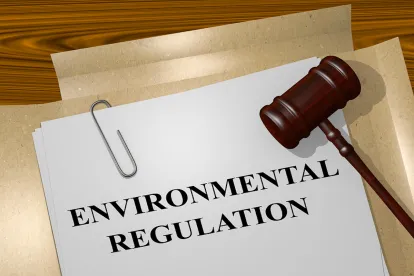Last week, the U.S. Environmental Protection Agency (EPA) released a pre-publication version of a Proposed Rule to designate PFOA and PFOS as hazardous substances under the Comprehensive Environmental Response, Compensation, and Liability Act (CERCLA or Superfund). This marks the next step in a trend of increasing regulation of per- and polyfluoroalkyl substances (PFAS), a class of chemical substances to which PFOA, PFOS, and a number of other substances belong. PFAS have been used for a variety of applications, including firefighting foams, stain guards, and non-stick coatings, and are now widely found in the environment.
Under CERCLA, EPA has the authority to require potentially responsible parties (PRPs) to remediate sites contaminated by hazardous substances, and to recover costs from such PRPs for EPA-led cleanups. These provisions do not yet apply to PFAS because they are not CERCLA hazardous substances, but if the Proposed Rule is finalized, these familiar provisions would apply to PFOA and PFOS. Similarly, the hazardous substance designation would allow private parties that incur costs to investigate and remediate PFOA and PFOS to use CERCLA’s cost recovery and contribution provisions to pursue other PRPs for recovery of associated costs.
The Proposed Rule, if finalized, could have significant impacts on Superfund sites that are presently undergoing remediation or even where remediation has already been completed. For sites being remediated now, the EPA-approved remedial plans would have been calibrated to address other hazardous substances (say, solvents) already designated under CERCLA. The addition of PFOA and PFOS as hazardous substances may require a change in plans and/or additional work to address PFOA and PFOS as well as the original drivers. For sites that have already been closed without investigation and remediation of PFOA and PFOS, designation of such substances as hazardous under CERCLA could cause those sites to be reopened and additional remedial efforts to be required.
EPA’s proposed CERCLA hazardous substance rule follows a significant reduction earlier this summer in EPA’s non-binding health advisory levels for PFOA and PFOS in drinking water. In 2016, EPA had set a non-binding health advisory level of 70 parts per trillion (ppt) for both PFOA and PFOS. In June of this year, EPA issued revised advisory levels of 0.004 ppt for PFOA and 0.20 ppt for PFOS, as well as new health advisory levels for additional PFAS GexX (10 ppt) and PFBS (2000 ppt). The health advisory levels continue to be non-binding, but EPA has signaled its intention to promulgate a final rule setting a maximum contaminant level for PFOA and PFOS, enforceable under the Safe Drinking Water Act, by the end of 2023. The proposed rule is expected later this year.
Following publication in the Federal Register, EPA will accept public comment on the Proposed Rule for 60 days. The precise text and timing of the final rule is not yet clear and may be impacted by the volume and tenor of public comments. It also remains to be seen whether EPA will propose to designate other PFAS as CERCLA hazardous substances, and if so, which ones.



 />i
/>i

